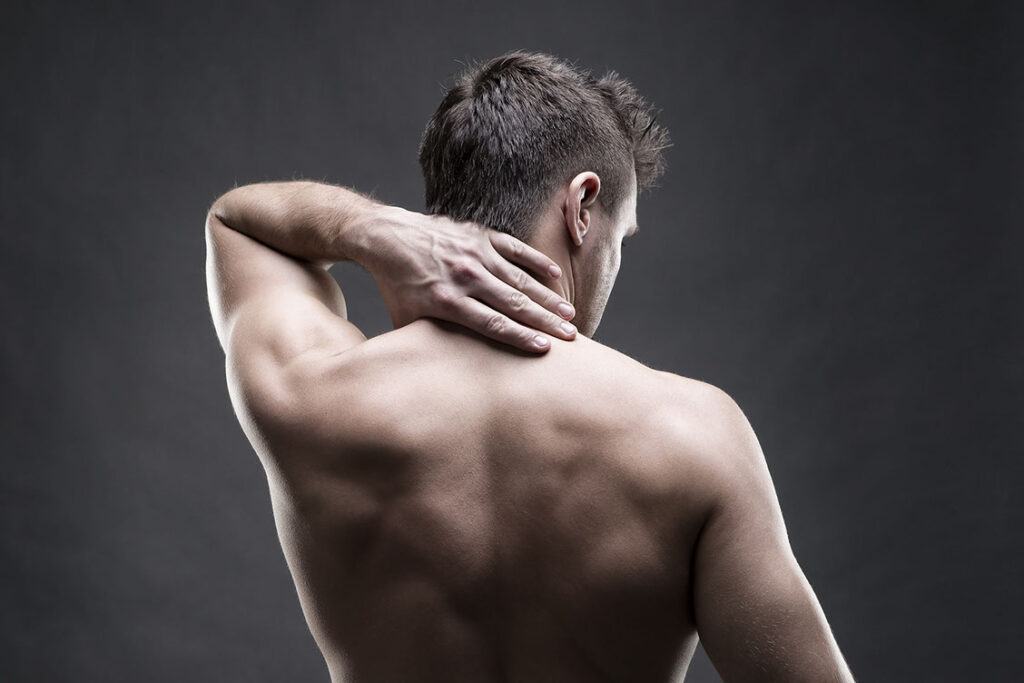What is Radiculopathy?
Radiculopathy is a pinched nerve in the spine. It occurs with changes in surrounding bones and cartilage from wear and tear, or from injury. These changes may cause pressure on a nerve root. A nerve root is the part of each spinal nerve that exits your spinal cord and goes through an opening in your spine.
When your nerve roots are compressed, they may become inflamed, causing numbness, weakness, and pain. Timely and appropriate treatment can reduce these symptoms.

What are the symptoms and types of Radiculopathy?
Symptoms of radiculopathy can range from mild to severe. The location of symptoms depends on which nerve root is affected.
- There are three types of radiculopathy:
- Cervical Radiculopathy is pressure on one of the nerve roots in your neck. It can cause weakness, burning or tingling, or loss of feeling in your shoulder, arm, hand, or finger.
- Thoracic Radiculopathy happens when there’s a pinched nerve in the upper back portion of your spine. This causes pain in your chest and torso.
- Lumbar Radiculopathy is pressure on one of the nerve roots in your lower back. It can cause hip pain and sciatica or shooting pain in your leg. Incontinence, sexual dis-function, or paralysis can also occur in severe cases.
What causes Radiculopathy?
Radiculopathy occurs when a nerve is compressed by surrounding tissue. It’s sometimes caused by a herniated spinal disc. This starts with a weakening or tearing of the outer rim of the disc. The nucleus, or inner part, then push outward and exerts pressure on a nearby spinal nerve.
Who is at risk for Radiculopathy?
Many spinal changes happen as you age. Radiculopathy usually affects people between the ages of 30 and 50. Conditions like osteoarthritis, rheumatoid arthritis, and obesity can increase the risk of Radiculopathy. Other risk factors are poor posture, spinal abnormalities like scoliosis, and repetitive movements. Pregnant women have a higher risk. It can also be hereditary, so you are at increased risk if your family has a history of Radiculopathy.
How is Radiculopathy diagnosed?
To diagnose Radiculopathy, our doctor will first perform a physical examination. They may then run certain tests or scans such as:
- An X-ray to view bone alignment or narrowing of the discs
- An MRI scan to get images of soft tissue, your spinal cord, and nerve roots
- A CT scan to see the fine details of your bones, including bone spurs
- An Electromyogram to measure the electrical impulses of your muscles when at rest and during contractions, which helps Our doctor identify damage.
- A Nerve conduction study to measure the ability of nerves to send electrical signals
Lumbar (low back)
The main function of the lumbar spine is to bear the weight of the body. The five lumbar vertebrae are numbered L1 to L5. These vertebrae are much larger in size to absorb the stress of lifting and carrying heavy objects.
How is radiculopathy treated?
At Sri Padmavathi Multi-Speciality Hospital, Our doctor may recommend home care, medications, treatment, or a combination of treatments.
You should limit activities that aggravate your pain. Our doctor can prescribe a splint, brace, or soft neck collar to immobilize the affected area. This makes it easier for you to rest the injured area.


